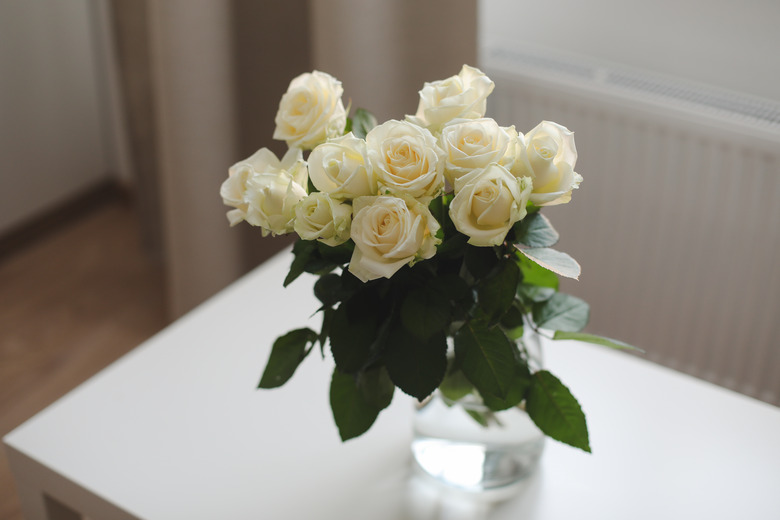How To Keep White Roses From Turning Brown
We may receive a commission on purchases made from links.
A fresh rose (Rosa spp.) provides a pleasant scent, and smooth, flawless petals can be an attractive surface for people and pollinators alike. Like any plant, however, a rose will turn brown when it begins to reach the end of its life cycle and may do so prematurely if infected with disease or pests. There are some things you can do to possibly prolong the life of a rose you are growing or keeping, whether it's on a plant or cut as a stem for enjoyment in your home. Rose bush leaves turning brown can be the sign of another problem, which can easily be fixed for healthier flowers.
Why Roses Turn Brown
Why Roses Turn Brown
A very common cause of browning in roses is a disease called Botrytis blight, which leads to the abnormal development of flowers and immature buds before leading to rotting of the flower. Brown spots can be seen on various parts of infected plants, including the flower, stem and leaves, and usually appear after cooler temperatures or periods of wet weather. Pests can also cause a rose plant to turn brown, and common culprits include Japanese beetles, aphids, mites and rose curculios, to name a few.
Rose petals can also turn brown from bruising, which can occur during the handling or trimming of rose bushes. Roses that have been cut for display in the home will turn brown as they move through decomposition phases, which is completely normal for cut plants of all types. The life cycle of a rose will eventually end in death; however, there are a few things you can do to keep your roses healthy and as long-lasting as possible, whether they are alive on a bush outside or cut for enjoyment inside your home.
Rose Bush Care
Rose Bush Care
Rose bushes are hardy plants with thick, strong stalks and leaves. The flowers that these plants produce are among the more delicate varieties, and the lighter the petal, the easier it is to notice the effects of time and damage. Keeping your roses protected from the heat and rays of the sun with a shade cover during especially hot months can go a long way toward keeping blooms fresh since roses should be getting about six hours of sunlight a day.
Be sure to offer your roses ample water and make sure your soil is well-draining and aerated to prevent possible fungal growth. Fertilizer for roses can ensure that your plants are getting proper nutrients, and it should be offered about once per month from early spring to midsummer.
Mildew and pest removal should be made a priority if you notice these things on or around your plants. An organic fungicide can eliminate certain types of fungal growth, and insecticidal soap can kill harmful pests, like aphids, that can cause rose plants to turn brown. When pruning your roses or deadheading blooms, be sure to clean your pruning shears between each use, as failure to do so can transfer harmful diseases, light blight, if they exist on your plants.
Making Cut Roses Last
Making Cut Roses Last
To prevent premature browning in cut flowers, use pruning shears to cut your flower stems at an angle so the bottoms don't rest flush against the bottom of the container. Use room-temperature water and remove any leaves that may rest below the surface of the water. Finally, unlike roses on bushes, cut roses should have somewhat limited exposure to heat and cold, so keep them away from direct sunlight, fans and vents for heating and cooling, as this can cause blooms to dry out.
